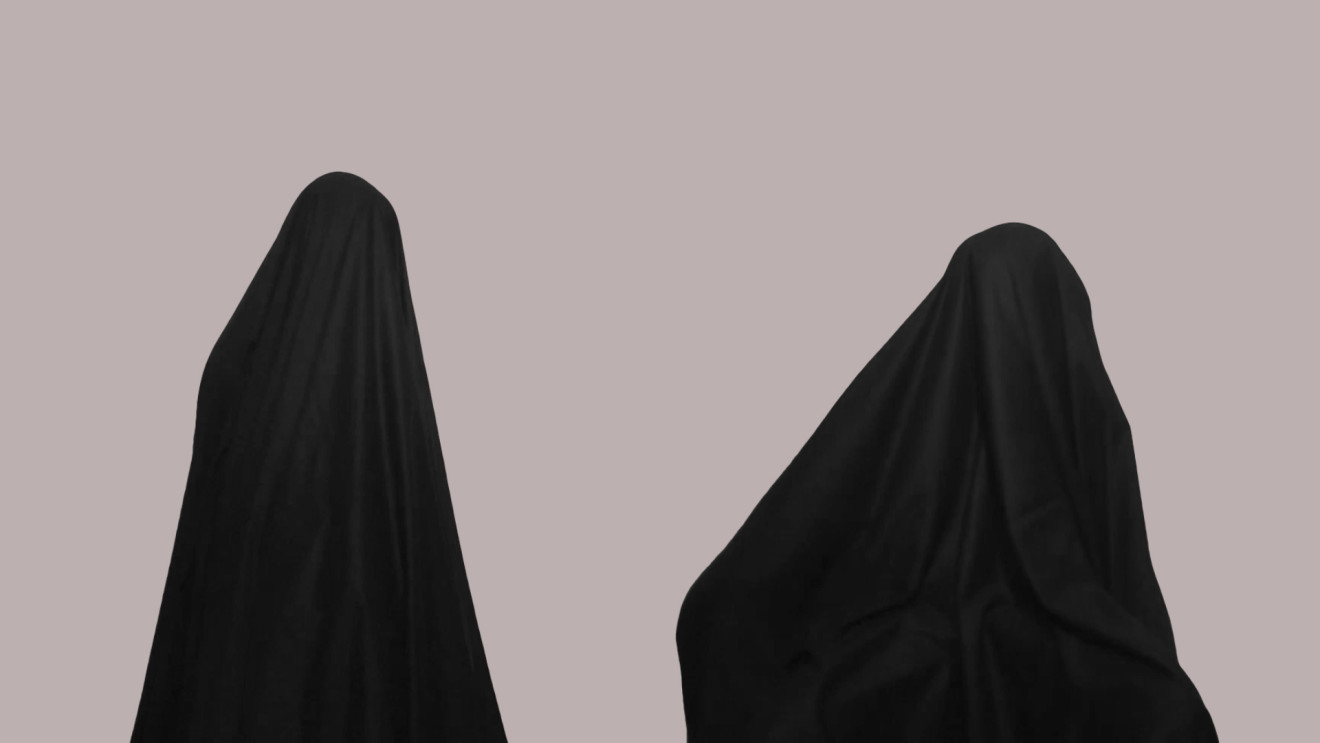Anahita Razmi
Middle East Coast West Coast, 2014
HD Video
23 minutes 04 seconds
Edition of 3 + 1 AP
The work Middle East Coast West Coast is a re-enactment of the video talk 'East Coast West Coast' (1969) by Nancy Holt and Robert Smithson. In the original video, Holt...
The work Middle East Coast West Coast is a re-enactment of the video talk "East Coast West Coast" (1969) by Nancy Holt and Robert Smithson. In the original video, Holt and Smithson are improvising a conversation based on stereotypical and opposing positions of US East Coast and West Coast lifestyle, art and artists. Holt assumes the role of an intellectual conceptual artist from New York, while Smithson plays the laid- back Californian driven by feelings and instinct.
Middle East Coast West Coast keeps the audio track of the original work, while the actors in the dialogue are replaced by two identically black veiled persona talking within a spatially abstract minimal setting. The chador-like wrap is (over)used as a cliché vehicle - relocating the conversation to the Middle East, reassembling the former bipolarities. The dialogue is shifting from the specified former context to artificial abstraction - from western art clichés to stereotypical images of the Middle East and art in the Middle East. It is trying to trace characteristics of these stereotypes, ideas of “the Other”, stereotypes within Middle Eastern and Western art notions and present globalized ideas of artistic practice, expression and expressiveness.
Middle East Coast West Coast keeps the audio track of the original work, while the actors in the dialogue are replaced by two identically black veiled persona talking within a spatially abstract minimal setting. The chador-like wrap is (over)used as a cliché vehicle - relocating the conversation to the Middle East, reassembling the former bipolarities. The dialogue is shifting from the specified former context to artificial abstraction - from western art clichés to stereotypical images of the Middle East and art in the Middle East. It is trying to trace characteristics of these stereotypes, ideas of “the Other”, stereotypes within Middle Eastern and Western art notions and present globalized ideas of artistic practice, expression and expressiveness.

